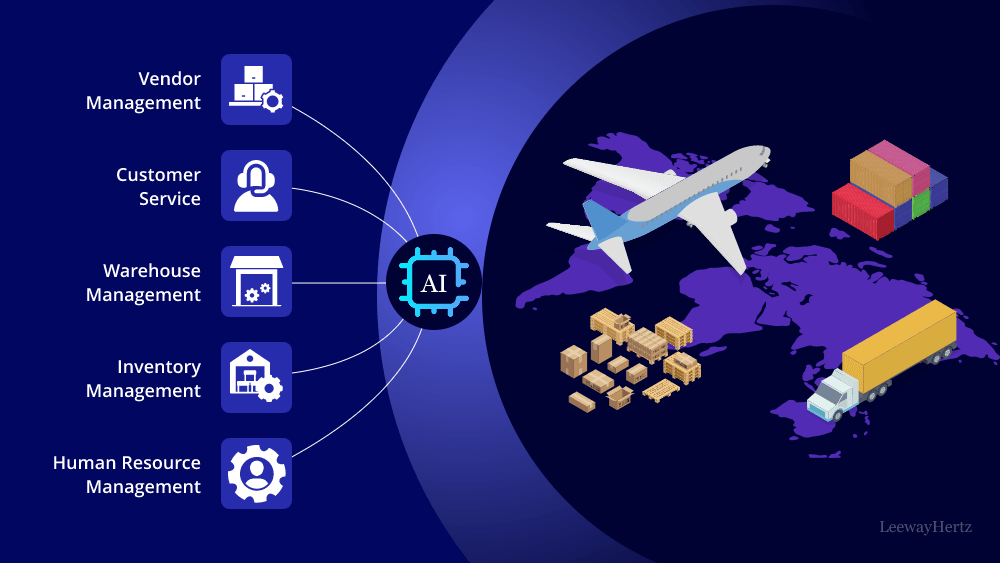AI has a significant impact on the accuracy and timeliness of supply chain forecasting in several key ways:
Accuracy
Data Integration and Analysis:
Big Data: AI can process vast amounts of data from various sources, including historical sales data, market trends, social media, weather forecasts, and more. This comprehensive analysis helps create more accurate demand forecasts.
Machine Learning: Algorithms can identify complex patterns and relationships in data that traditional methods might miss. Machine learning models can continuously learn and improve their accuracy over time as more data becomes available.
Css
Predictive Analytics: AI can predict future trends and demand fluctuations more accurately by analyzing past and current data, considering multiple variables simultaneously.
Anomaly Detection:
Outlier Identification: AI systems can detect anomalies or unusual patterns in the data that could indicate potential issues, such as sudden changes in demand or supply chain disruptions. This allows for quick corrective actions to maintain forecast accuracy.
What is the easiest tech career
Scenario Planning and Simulation:
What-If Analysis: AI can simulate different scenarios based on various assumptions and variables, helping companies understand potential outcomes and plan accordingly. This reduces the uncertainty in forecasts and enhances accuracy.
Timeliness
Real-Time Data Processing:
Continuous Monitoring: AI systems can process and analyze data in real-time, providing up-to-date forecasts. This reduces the lag between data collection and decision-making, allowing for more timely responses to changes in the market.
Dynamic Adjustments: AI can dynamically adjust forecasts based on new information or changes in key variables, ensuring that forecasts remain relevant and timely.
Automation:
Automated Data Collection: AI can automate the collection and integration of data from various sources, reducing the time required to gather and prepare data for analysis.
Automated Forecasting: AI-driven systems can generate forecasts automatically without the need for manual intervention, speeding up the forecasting process and allowing supply chain managers to focus on strategic decisions.
Efficient Resource Allocation:
Proactive Planning: Timely and accurate forecasts enable better resource allocation, such as inventory management, production scheduling, and transportation planning. This reduces delays and ensures that resources are used efficiently.
Case Studies and Examples
Retail Industry:
Walmart: Walmart uses AI to analyze data from its stores and online sales to forecast demand and manage inventory more effectively. This has helped the company reduce stockouts and overstock situations, improving overall supply chain efficiency.
Manufacturing:
Siemens: Siemens uses AI-driven predictive analytics to forecast demand for its products and optimize its supply chain operations. This has resulted in improved production planning and reduced lead times
E-commerce:
Amazon: Amazon uses AI to forecast demand, optimize inventory levels, and manage its vast supply chain network. The company’s ability to deliver products quickly and efficiently is largely due to its advanced AI-driven supply chain management systems.
Challenges and Considerations
Data Quality: The accuracy of AI-driven forecasts depends heavily on the quality of the data. Poor data quality can lead to inaccurate forecasts, so ensuring data integrity is crucial.
Implementation Costs: Implementing AI systems can be expensive and resource-intensive. Companies need to weigh the benefits against the costs and ensure they have the necessary infrastructure and expertise.
Change Management: Integrating AI into supply chain forecasting requires changes in processes and workflows. Companies must manage this transition effectively to ensure successful implementation.
In conclusion, AI significantly enhances the accuracy and timeliness of supply chain forecasting by leveraging advanced data analysis, real-time processing, and automation. While challenges exist, the benefits of improved forecasting can lead to substantial gains in efficiency and competitiveness for companies.

Leave a Reply
You must be logged in to post a comment.